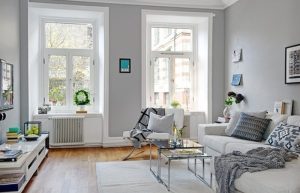Creating a safe and accessible bathroom for disabled family members involves thoughtful planning and implementation of various modifications to ensure comfort and usability. The primary goal is to create an environment that minimizes hazards and facilitates independence. Start by ensuring that the bathroom is easily accessible. This includes having a wide door that can accommodate a wheelchair or mobility aid. Installing an automatic door opener can further ease access for those with limited strength or dexterity. The flooring should be slip-resistant and smooth, avoiding rugs or mats that could cause tripping. Opt for water-resistant materials that are easy to clean and maintain. The layout of the bathroom is crucial. Arrange fixtures to allow for ample maneuvering space, typically a turning radius of at least 5 feet for a wheelchair. Consider installing grab bars near the toilet, shower, and bathtub. These should be placed at an appropriate height and securely anchored to support weight.
Additionally, ensure that these bars are made of non-slip material for added safety. A roll-in or walk-in shower is an excellent choice for accessibility. It should feature a low threshold or be at floor level to avoid any barriers. Include a shower seat and handheld showerhead to accommodate various needs. For those who use wheelchairs, an adjustable showerhead and an easy-to-reach control panel can enhance usability. In the case of the toilet, a raised toilet seat can be beneficial, as it reduces the effort required to sit down and stand up. Also, consider a toilet with side-mounted controls that are easy to reach. Ensure that the space around the toilet is clear to allow for easy transfer from a wheelchair or other mobility aid. Vanities and sinks should be at an appropriate height for wheelchair users. Under-sink clearance is important to accommodate a wheelchair. Touch less or lever-style faucets can be easier to operate for those with limited hand strength.
Install mirrors at a height that allows for easy visibility from a seated position. Proper lighting is essential for safety. Bright, even lighting helps to prevent accidents and allows for better visibility. Use motion-sensor lights or easy-to-reach light switches to accommodate varying abilities. Finally, consider incorporating additional features like an emergency call system or a phone within easy reach in case of accidents. Regularly review and adjust the bathroom setup based on feedback from family members to ensure ongoing comfort and safety. By integrating these modifications, you can create a ada bathroom sink height that enhances independence, safety, and dignity for disabled family members, contributing to a more accessible and supportive home environment.

